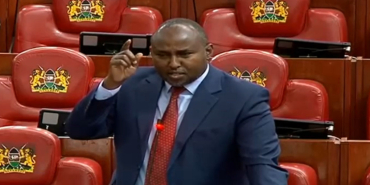KDF Report: Engine Failure Led to Helicopter Crash That Killed General Ogolla

An official Ministry of Defence report has concluded that engine failure was the primary cause of the April 2024 helicopter crash that killed Kenya's Chief of Defence Forces (CDF) General Francis Ogolla and nine others.
The findings, presented to President William Ruto, detail a catastrophic sequence of events stemming from a critical mechanical malfunction during a routine mission. The ill-fated Bell UH-1H-II (Huey) KAF 1501 helicopter experienced a compressor stall due to excessive gas temperature, ultimately leading to the crash. The report reveals that the engine's measured gas temperature (MGT) gauge displayed an over-exceedance of 914°C, exceeding the melting point of aluminium commonly used in aircraft construction.
Witness accounts describe a loud bang originating from the engine compartment, followed by a complete loss of power, leftward yaw, and a sharp drop in engine RPM. These observations corroborate the report's conclusion that the engine suffered a compressor stall, characterized by abnormal airflow to the engine's compressor leading to a loss of thrust.
The helicopter, carrying 12 individuals, was en route to the North Rift region as part of Operation Maliza Uhalifu, when the crash occurred.
Impacting on a farm, the aircraft caught fire, resulting in the immediate deaths of eight passengers. Two others succumbed to injuries shortly after, while only two survived to provide crucial testimonies for the investigation.
Investigators ruled out a range of potential causes, including pilot error, crew coordination issues, and external factors such as adverse weather conditions or communication breakdowns. The pilot and co-pilot were both highly experienced with extensive flight hours and rigorous training.
Pre-flight checks indicated that the aircraft's fuel, gearbox oil, and hydraulic fluid levels were within normal parameters, with no issues detected in flight planning or weight management. Despite these findings, questions remain surrounding the rationale behind the engine's overhaul in December 2023, particularly as prior inspections had not indicated any major defects. The Ministry of Defence has since updated its standard operating procedures.
“The helicopter underwent other scheduled servicing such as 25 hours inspection on December 14, 2023. An overhauled engine was installed on December 12, 2023. Additionally, the helicopter underwent 50 hours inspection on January 9, 2024, 75 hours inspection on January 29, 2024 and 100 hours inspection on February 11, 2024, 25 hours inspection on February 22, 2024 one hundred and 150 hours inspection on March 17, 2024 respectively.”














Add new comment